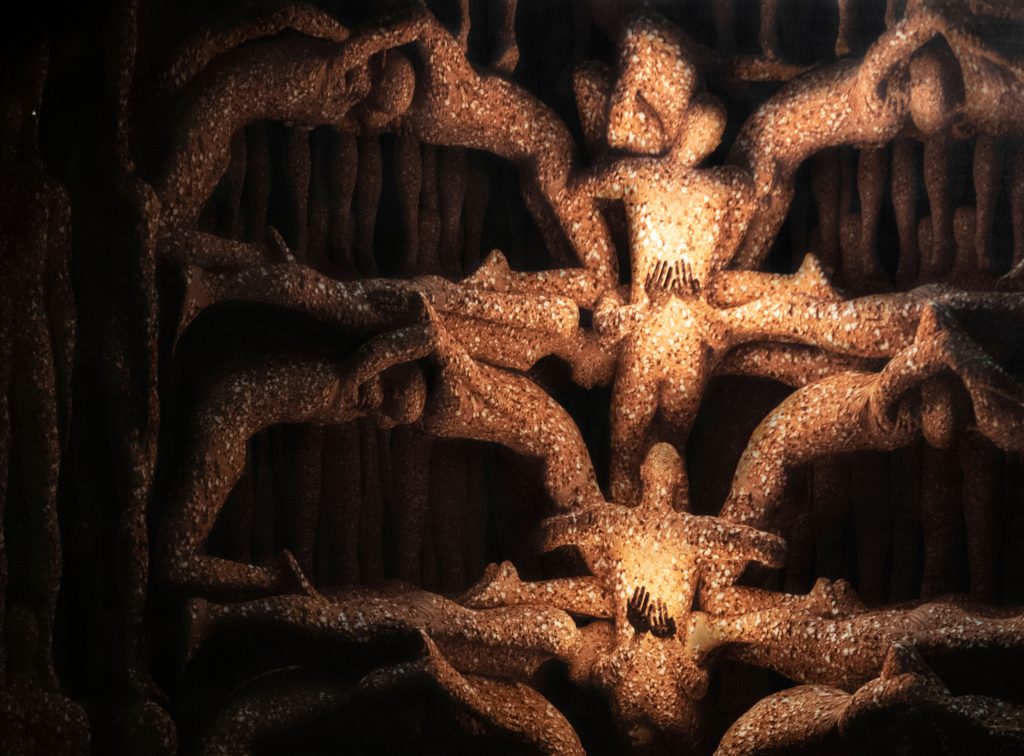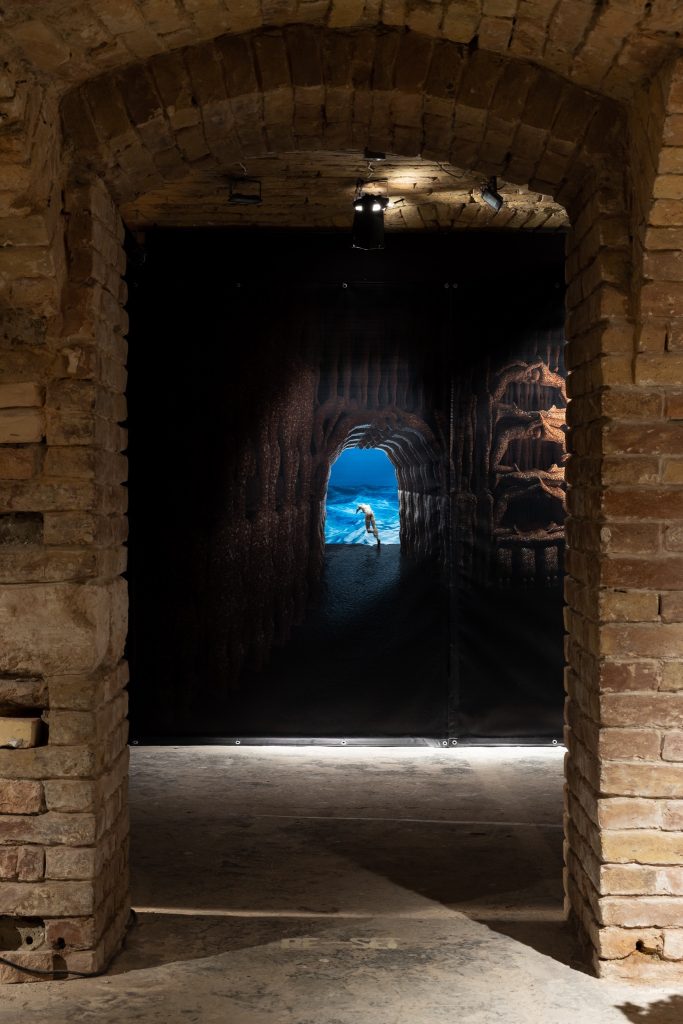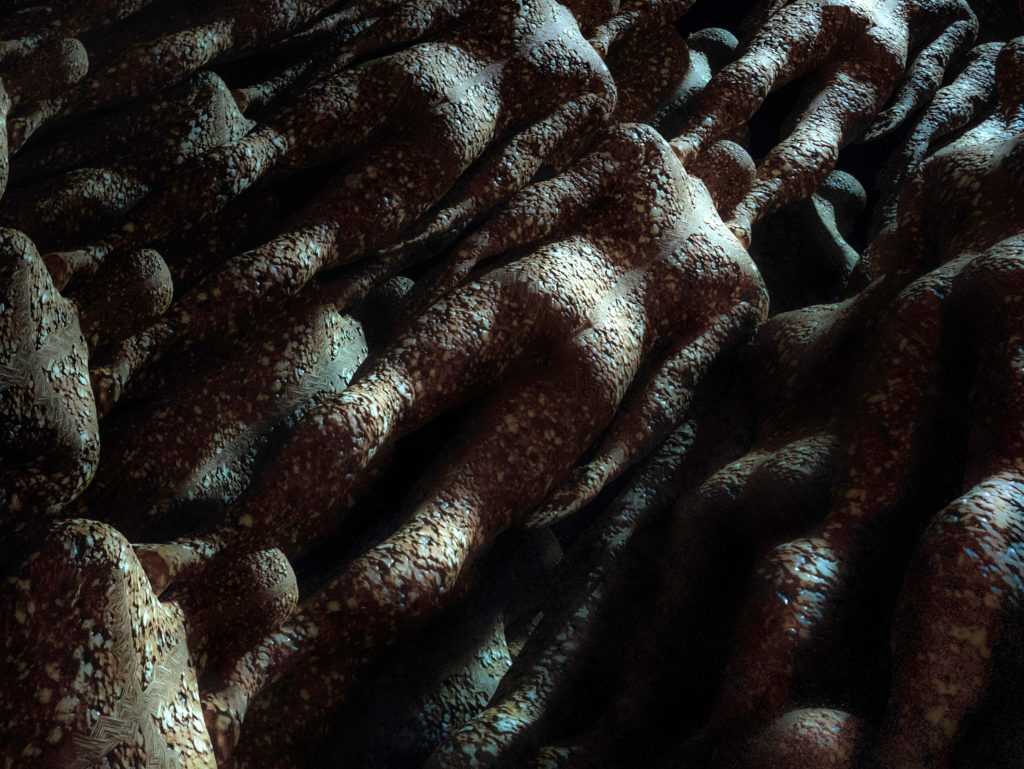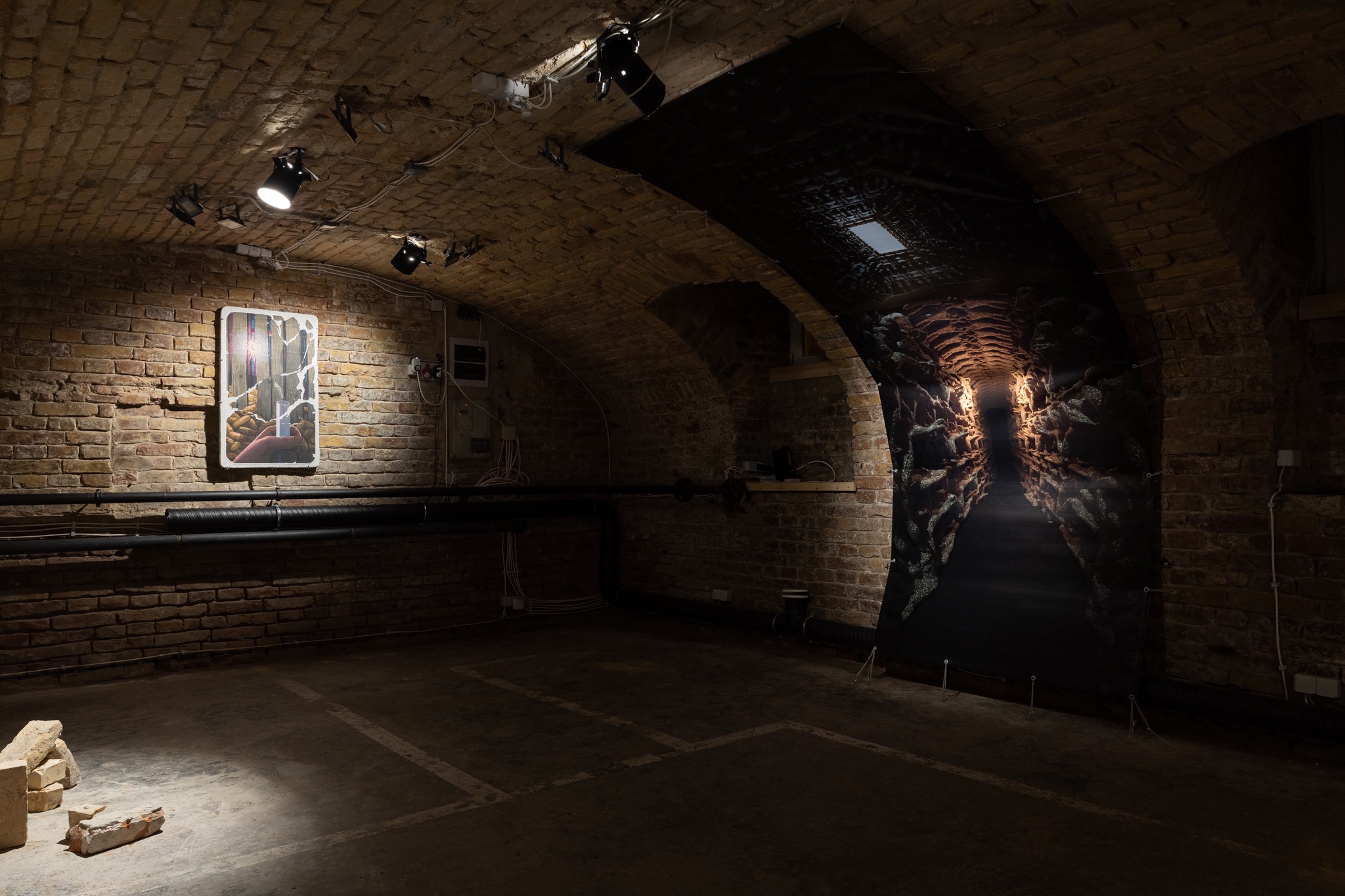Duo exhibition with Emese Kádár at ReSet Art Space, Budapest, Hungary held between 18th November and 9th December 2022. Curated by Anna Zsoldos and on behalf of ReSet, Enikő Tar and Tamara Csermák.
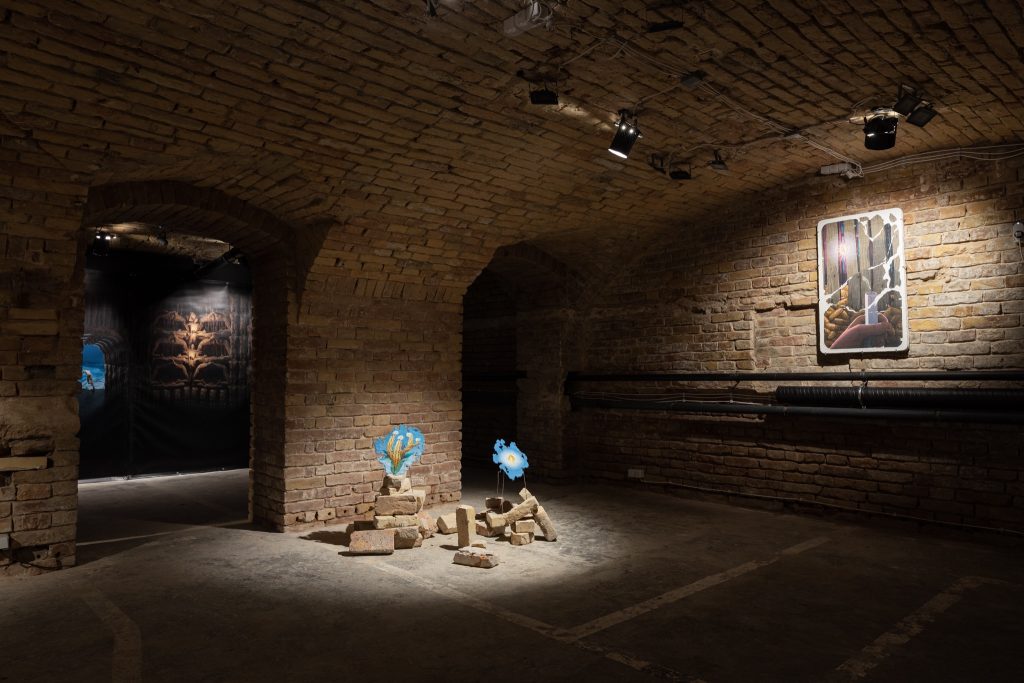
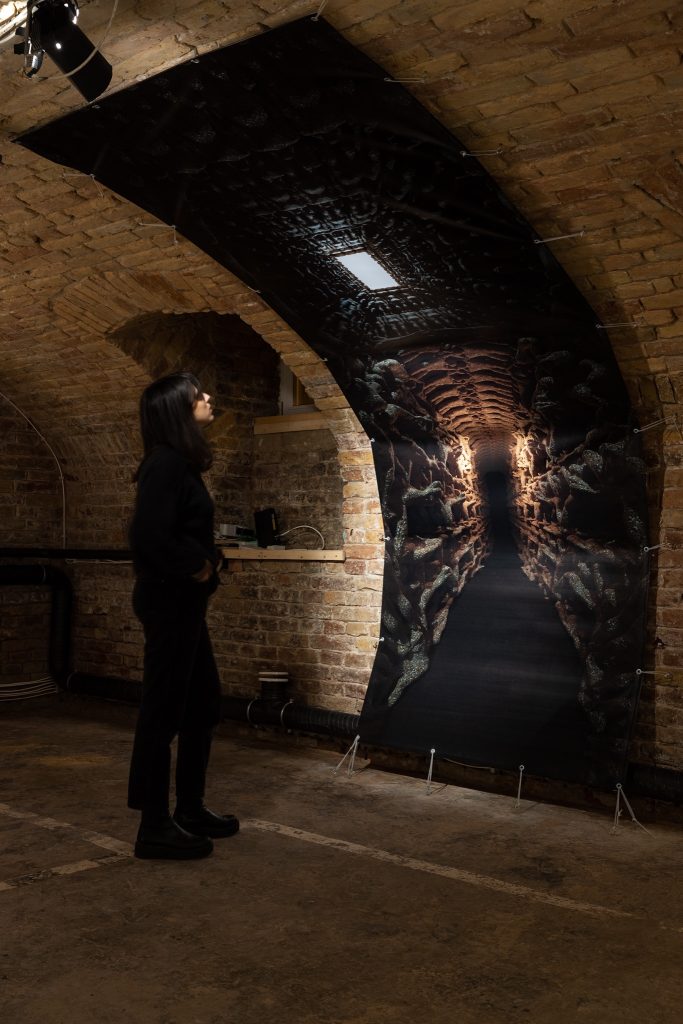
Digital print on PVC
140 x 375 cm
2022
The main inspiration for this project was ancient Roman catacombs, which functioned as inverse cities of the dead and formed negative spaces underground. This is where the concept of “underground counterculture” originates from since it stems from an era when Christianity was an illegal religion, towards which the state was highly hostile. Catacombs provided a peaceful resting place for their dead and a safe place for ceremonies for the living. Thus, underground spaces have become secret hiding places for centuries of countercultures since, offering refuge and freedom. In today’s politically hostile atmosphere, one may ask themselves when immersed in the installation: What could a catacomb provide them safety and freedom from now? Also, can an individual truly be free in a mainstream or countercultural community? Can we only achieve this alone among the elements, void of ties and dependencies?
//
Az évszázadok során a “földalatti” az ellenkultúra, a szabadság és a biztonság szimbólumává vált. A történelem számos példát nyújt arra, amikor a föld alá ereszkedés fizikai és szellemi menedéket nyújtott pusztító fegyverek és elnyomó rendszerek ellen.
Az Inverz város projektet az ősi katakombák ihlették, amelyeket a korai keresztények azért hoztak létre, hogy elrejtőzhessenek a Római Birodalom elől, és halottaiknak örök nyugalmat biztosítsanak. A katakombák organikusan és gyakran illegálisan alakultak ki, folyamatosan terjeszkedve. Az építészetben egyedülállóak, mivel homlokzat nélküli helyek, csupán negatív terek a földben. Föld alatti menedéket kínáltak üldözötteknek, ahol kialakíthatták közösségüket és tetszésük szerint gyakorolhatták rituáléikat.
A műalkotások szimbolikus menedéket kínálnak a nézőknek, ami fel is veti a kérdést, mivel szemben van ma szükségünk arra, hogy katakombák megvédjenek?
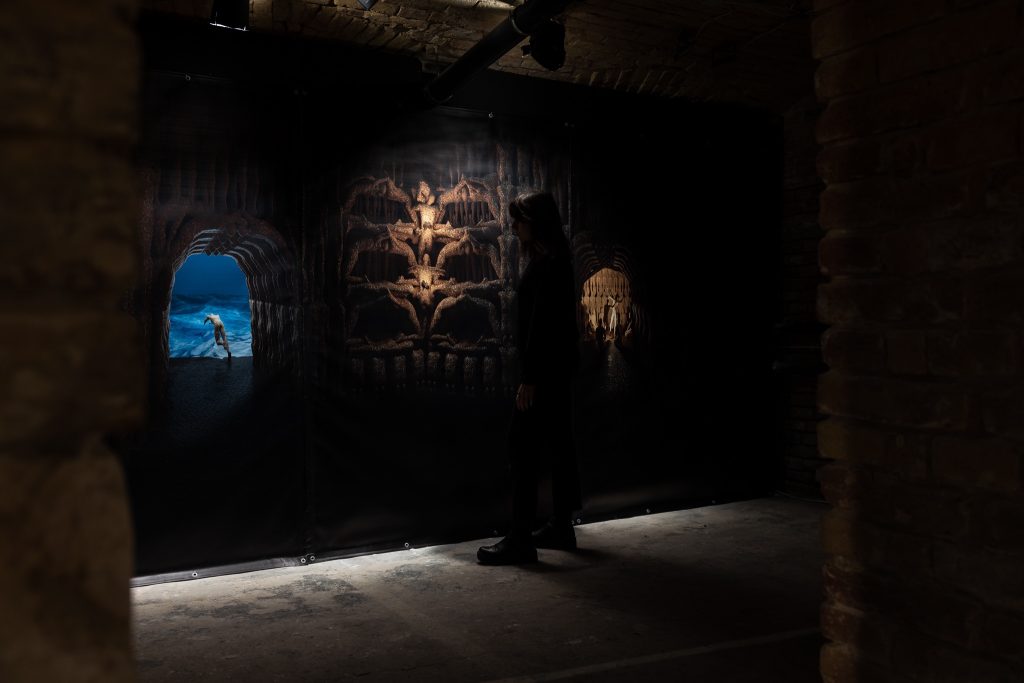
Digital print on PVC
450 x 220 cm
2022
Inverse City is a two-piece installation that aims to create a bridge between the digital and analogue worlds. The large-scale digital prints create an immersive illusion of space, thus incorporating the viewer as an agent of the fictive world.
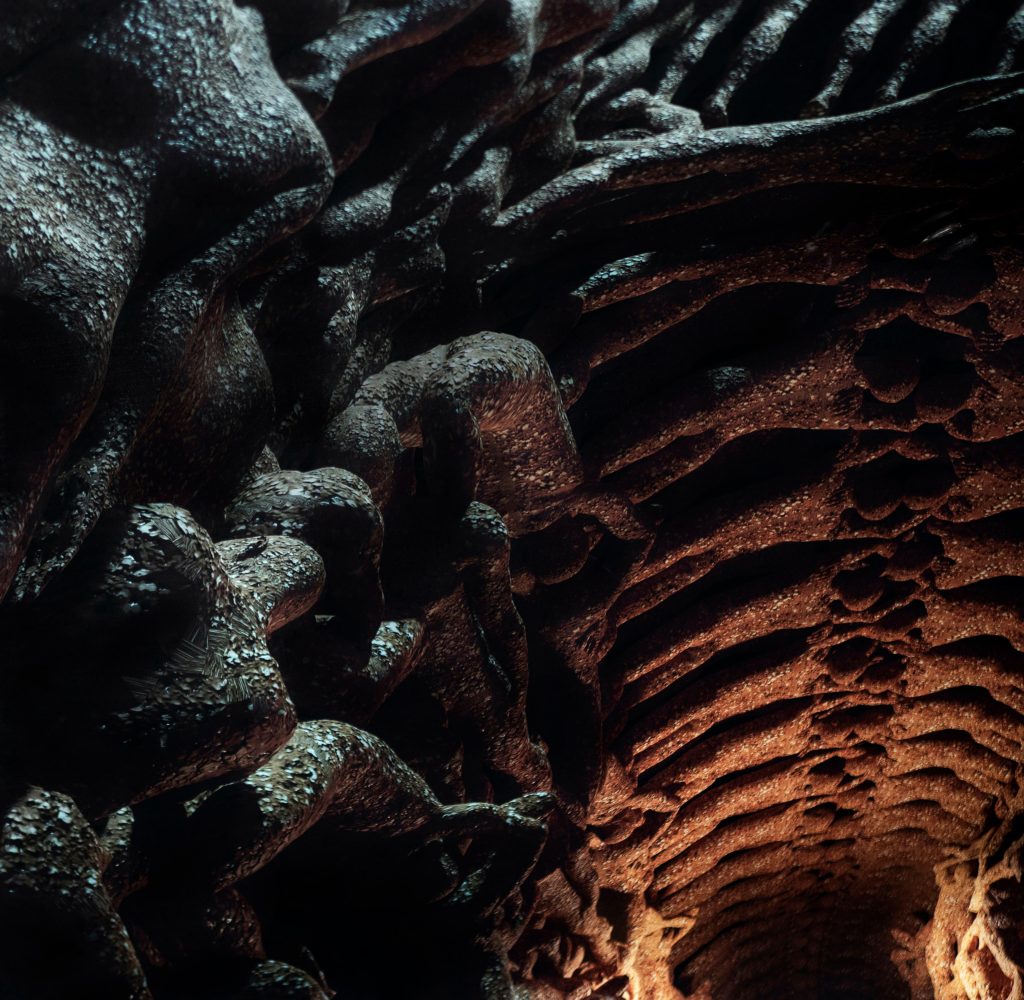
We developed the exhibition during a year of collaboration in which our projects went hand in hand. The works merge the borders between the analogue and digital, illusionary and real.
Rituals, beliefs and community are central questions of our work. How can communities unite and practise resistance against opposing powers? How can individuals create their own truths and mythologies that might contradict common sense and rationality? Where can we escape in search of meaning and belonging? Liminal space outside or underneath towns and cities traditionally have always offered a home for hopes, secrets and reunions. “Tears of the Wall” aims to provide the viewer with a cathartic experience in search of answers to these questions.
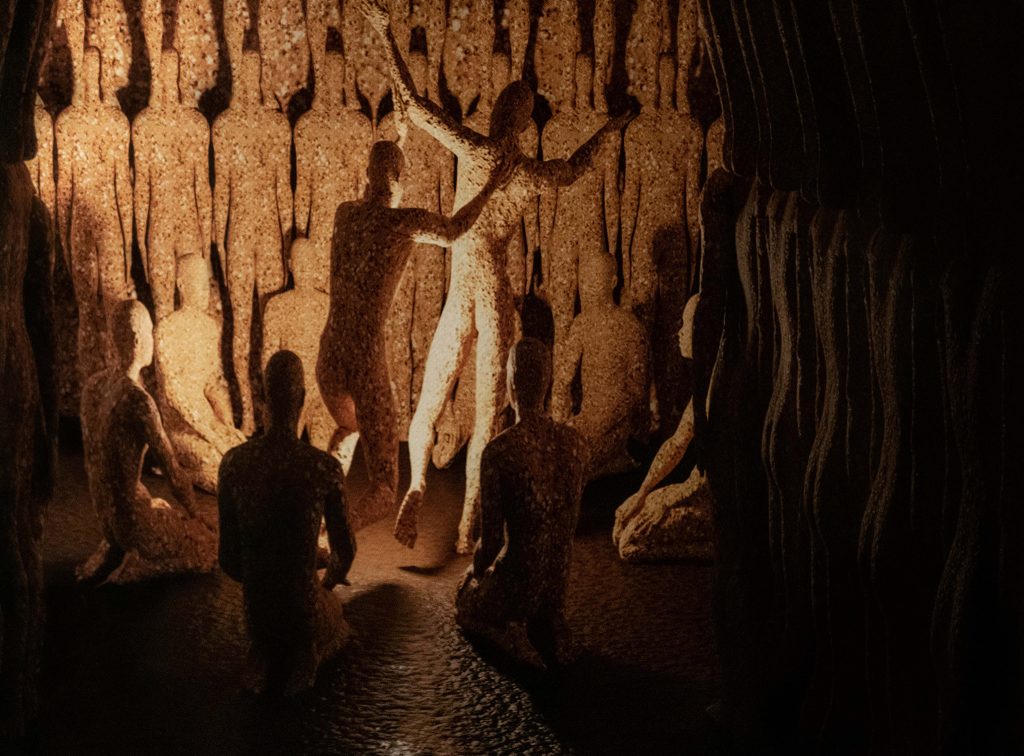
ARTICLE // CIKK: Elrejtett rítusok menedéke – Kádár Emese és Kicsiny Martha kiállításáról -Kuzma Eszter Júlia cikke a kiállításról a kepzo.art-on. // Article on the exhibition in Hungarian.
ARTICLE // CIKK: 2022 SZEMÉLYES LEGJEI – KERGYÓ ZSÓFIA SZERINT
KERGYÓ ZSÓFIA Artmagazine Online. // In Hungarian.
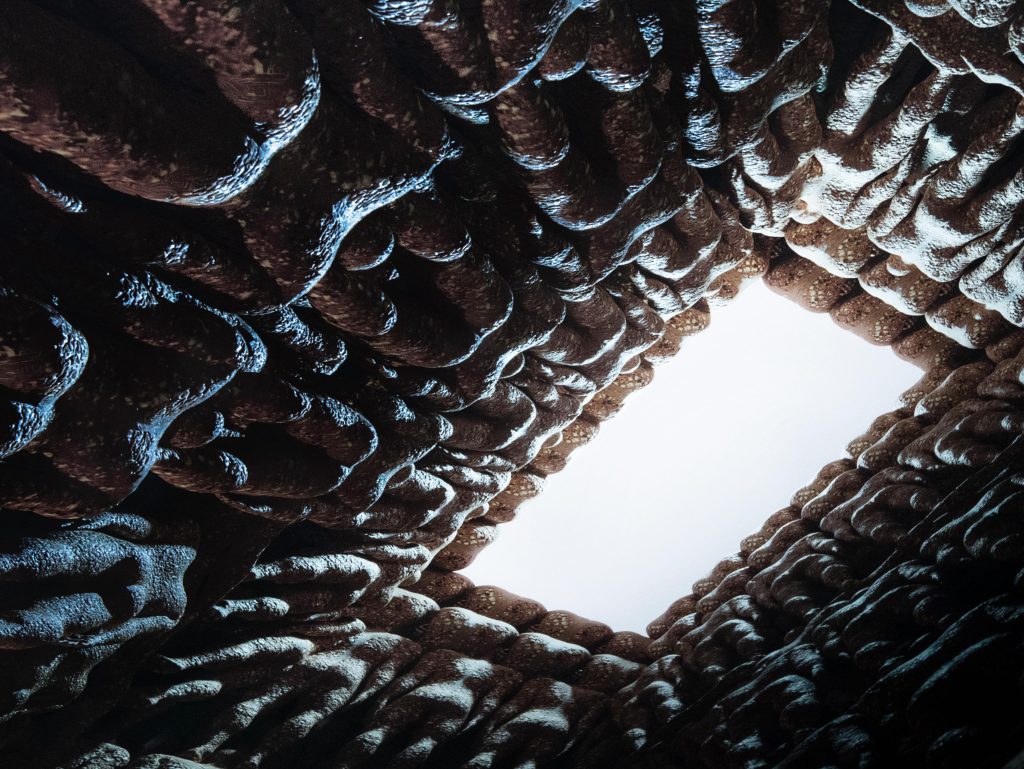
Excerpt from a diary
The locals worship this place with dread. They think an ancient burial site must lay deep within the depths of this earth. Its existence is yet to be proved as it awaits discovery. A vast corn field has covered it in the past thirty years, a wheat field before that. A highway will split it in two before long.
They tell stories of painted stone tablets, burnt bricks and stone fragments produced from the soil during the plough. The tablets have been brought to the local temple to be merged with its walls. The bricks have been scattered. The temple is still famous for its Weeping Mary fresco, a phenomenon only seen on the first day of harvest – lasting ‘till midnight that day.
I arrived just before the harvest. The farmers work in large groups, their hands all needed for labour. The harvest of the corn proceeds the same way as it ever did with their ancestors. The first plant is sacrificed during a mourner’s song, sung by the womenfolk grasping each other’s arms, their tears feeding the freshly turned ground. The plant is then transferred to the temple’s altar with a quiet ceremony. The Mary fresco starts its weeping only moments later. A mourning mass is held and the vigil starts until the last teardrop. This will be the last harvest here.
Fortunately, I got hold of the research permit if they’d ever dig up anything under the field. My access was prohibited until then. Days passed as I continued my research in the town library’s archives. I knew there had to be something.
Then I got the news. This time a discovery was made not by a plough but by heavy heavy machinery: several days of digging later it opened into the darkness beyond. I found huge brick vaults painted inch to inch with elaborate designs. There were decorated stone tables and some plant seeds – presumably used for rituals – scattered alongside huge walls covered in impressive painted figures from top to bottom. I figured the faded tablets in the temple were similar to those laying on the ground.
The light was faint… A small, calm stream of water was flowing among the cracks of the bricks. I rub my eyes…
(Anna Zsoldos)
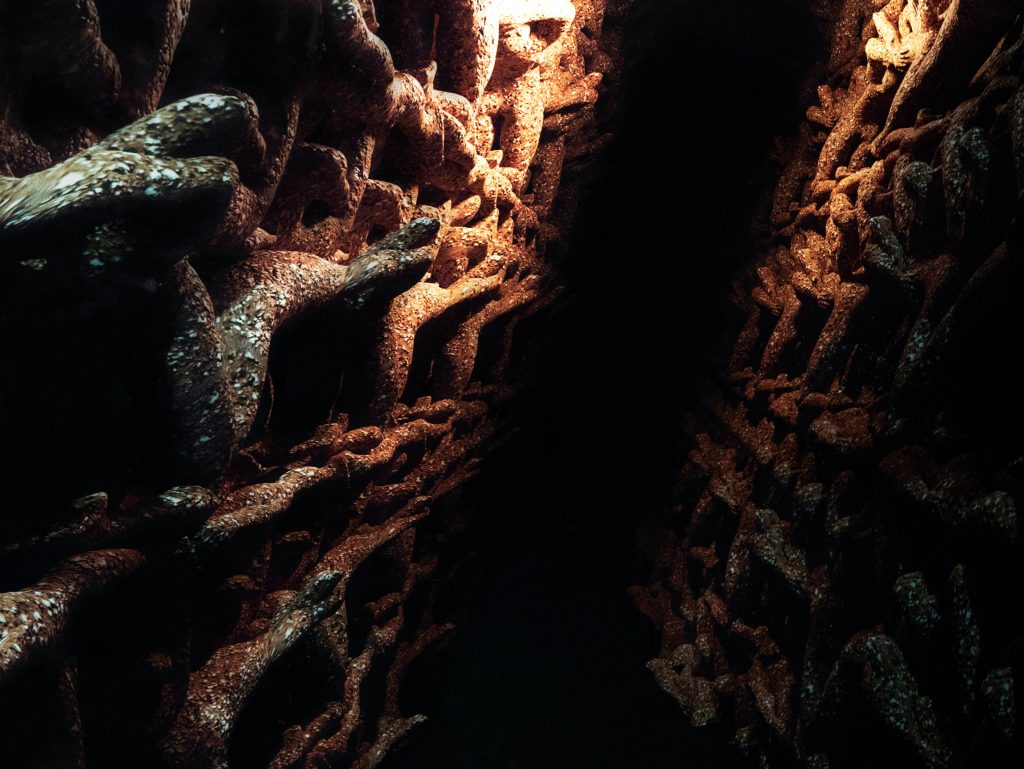
Naplórészlet
A helyiek félve tisztelik ezt a területet, úgy hiszik egy ősrégi temető fekszik a föld mélyén. Még senkinek sem sikerült feltárnia, vagy forrásokkal bizonyítani létezését. Az utóbbi harminc évben már kukoricás fedi, előtte pedig gabonával vetették be. Egy éven belül autópálya szeli majd ketté. Mesélik, hogy régen szántás közben az eke festett kőtáblákat fordított ki a földből, és gyakran megesett, hogy égetett téglák, kőmaradványok kerültek elő. A táblák a helyi templomba kerültek, beépítették a falába, a téglákat pedig széthordták. A templom ma is híres könnyező Szűz Mária freskójáról, a jelenség csupán az aratás első napján figyelhető meg és pontban éjfélkor véget is ér. Pont a betakarítás előtti napokban érkeztem, a földművesek még mindig együtt dolgoznak, hisz sok kéz kell hozzá. A kukorica betakarítását pontosan úgy végzik, ahogy elődeik az aratást. Feláldozzák az első kukoricanövényt, majd elsiratják egy hosszú siratódal közben, amit az asszonyok összekarolva énekelnek. Könnyeikkel a földet áztatják. A növényt díszes, ám halkszavú körmenetben a templomba szállítják, az oltárra helyezik, majd kisvártatva az axisban a freskó könnyezni kezd. Utána gyászmisét celebrál a pap és kezdetét veszi a virrasztás az utolsó könnycseppig. Ez lesz az utolsó betakarítás itt.
Szerencsére megkaptam a kutatási engedélyt, arra az esetre, ha az építkezés alatt találnának bármit is. A területre addig nem mehettem. Napok teltek el és a helyi kisváros levéltárában folytattam a kutatást, mert biztos voltam benne, hogy lennie kell itt valaminek. Hírt kaptam, hogy most nem az eke, hanem a markolók találtak valamit: egy földalatti alagútrendszer bejáratát. Több nap kemény fizikai munkája kellett, hogy utatvágjunk, de sikerrel jártunk és beléphettünk a föld alá. Dongaboltozatos terek tárultak elém, téglaból építve, minden hajlata festve: egy sírbolt volt. Freskókat láttam, a lábazattól a boltozatig emberalakokkal festették tele a falakat. A térben rituálékhoz használt festett kőtáblák, ételmaradványok, magok hevertek szerteszét. Talán ezekhez a festett kövekhez hasonlóak koptak el a templom falán. Kevés volt a fény, a téglák között csurgott a víz, és áztatta a falakat. Megdörzsöltem a szemem.
(Zsoldos Anna)
•
Exhibition view photographs by Kata Linda Kis
Detail photographs by Martha Kicsiny
